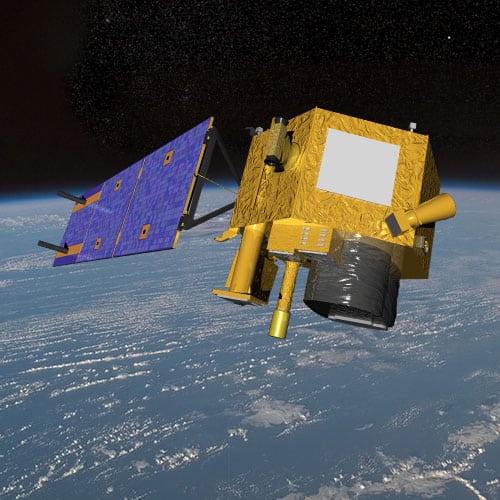Latest News

Rendering of EO-1. Photo: NASA.
Orbital ATK announced it successfully concluded 17 years of mission support for NASA’s Earth Observing 1 (EO 1) satellite. NASA decommissioned the spacecraft, built by Orbital ATK for NASA’s Goddard Space Flight Center in Greenbelt, Maryland, on March 30.
Launched on November 21, 2000, the EO 1 satellite had an initial design and mission life of one year, but continued successful operations for more than 16 years beyond the initial mission. Orbital ATK served as the mission’s prime contractor, satellite mission integrator and bus developer. According to Orbital, the EO 1 mission developed and validated a number of instrument and spacecraft bus breakthrough technologies designed to enable the development of future earth imaging observatories.
EO 1, using two major observing instruments, Advanced Land Imager (ALI) and the Hyperion imaging spectrometer, has provided more than 92,000 images to date consisting of equal amounts of multispectral and hyperspectral imagery. These instruments allowed the EO 1 team to acquire high spatial resolution of events and natural disasters around the world. The Hyperion instrument also allowed scientists to see chemical constituents of Earth’s surface in fine detail with hundreds of wavelengths.
EO 1’s science data and research has also been noted in more than 1,500 related publications further demonstrating the satellite’s impact on Earth science and technology advancements. During the first year of EO 1 mission operations, NASA also validated seven other technologies developed under its New Millennium Program.
Under NASA’s decommissioning process, the mission team has shut down the satellite effective March 30, and confirmed that the spacecraft’s final configuration is consistent with the approved end of mission plan. NASA estimates the spacecraft will safely reenter the Earth’s atmosphere in 2056.
Get the latest Via Satellite news!
Subscribe Now